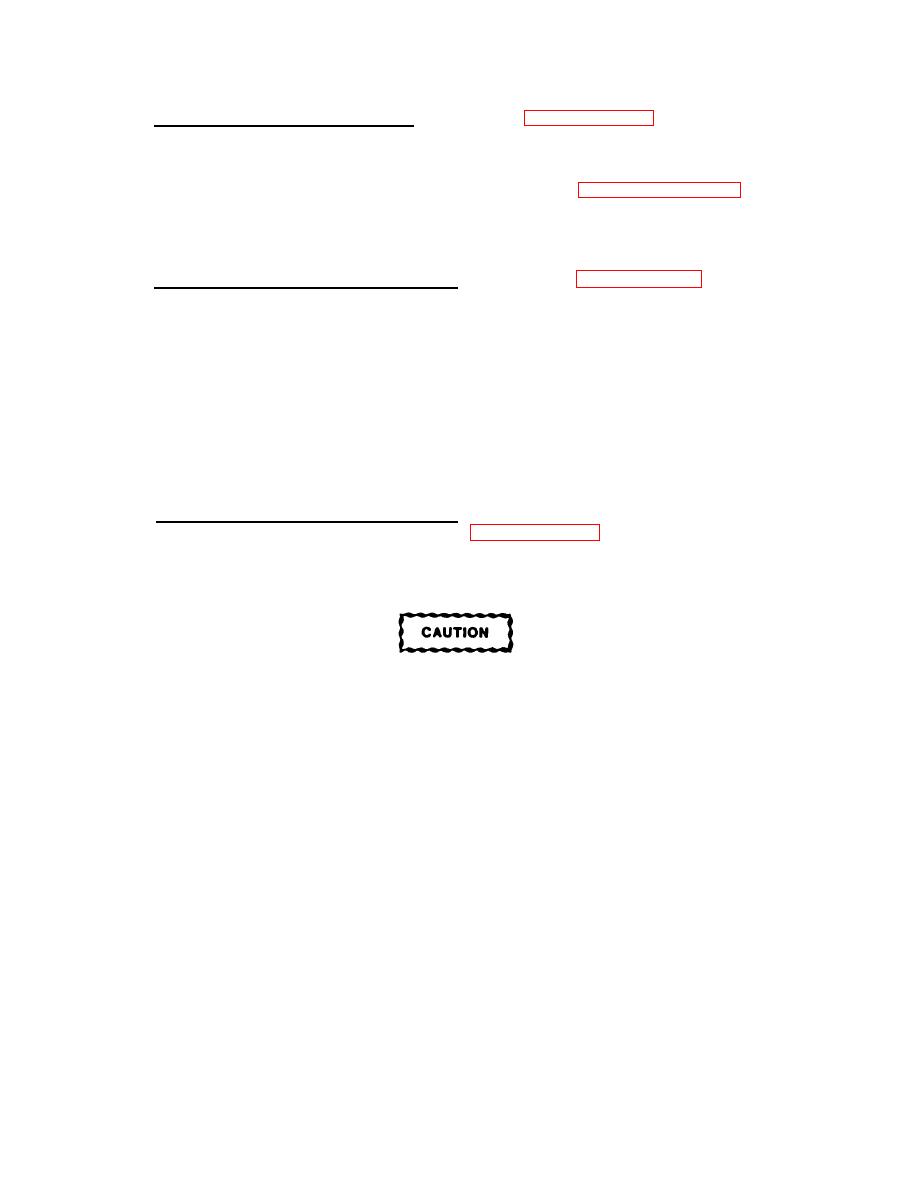 |
|||
|
|
|||
|
|
|||
| ||||||||||
|
|
 TM 32-5865-218-24&P
Refer to figure 5-13 and proceed as
f.
Indicator CCA A3 Removal.
follows:
Turn the two turnlock studs (10) CCW and remove the front
(1)
panel plate (11) in accordance with paragraph 5-12d.
(2) Lift both card ejectors (12) pull the indicator CCA (13)
forward, out of the holder (14) and chassis (52).
Refer to figure 5-13 and
Indicator CCA A3 Replacement.
g.
proceed as follows:
Place the indicator CCA (13) into the holder (14) and
(1)
slide the CCA evenly into the ECM bracket (36) until it
engages connector XA3 (15).
Press the indicator CCA (13) firmly into connector XA3
(2)
(15).
(3) Aline the front panel plate (11) with the mounting holes
and turn the two turnlock studs (10) fully CW.
Removal and replacement of
h. Circuit Card Assembly Repair.
an indicator CCA A3 component (see figure 5-14) requires use of a
low-wattage (30 W or less) soldering iron and appropriate heat sinks.
Observe standard shop practices as well as general practices and pre-
cautions for CCA and microelectronic components while performing the
following steps:
Use a soldering pencil to solder all necessary points on
the CCA. A soldering gun may cause overheating of CCA
traces, lead pads, or laminations. overheating may cause
either pads or traces to lift from the CCA. Subsequent
breakage is probable.
soldering
(1)
Assemble the following soldering materials:
pencil, rosin core solder, small stiff brush (item 3,
App. D), cotton swabs (item 16, App. D), solder sucker or
resoldering wick, orangewood sticks (item 31, App. D),
humiseal (1A33 or 1B31) (item 9, App. D), and freon/
alcohol cleaning solution (freon TFE, TE, or TMS) (item
14, App. D).
Saturate a cotton swab (item 16, App. D) with AP-20 Kester
(2)
Resin Remover Solvent (item 15, App. D).
Wipe area to be repaired with saturated swab until con-
(3)
formal coating is dissolved.
Clean up excess solvent, using a clean cotton swab. Allow
(4)
CCA to air dry at ambient temperature at least 15 minutes
prior to beginning further repair work.
|
|
Privacy Statement - Press Release - Copyright Information. - Contact Us |